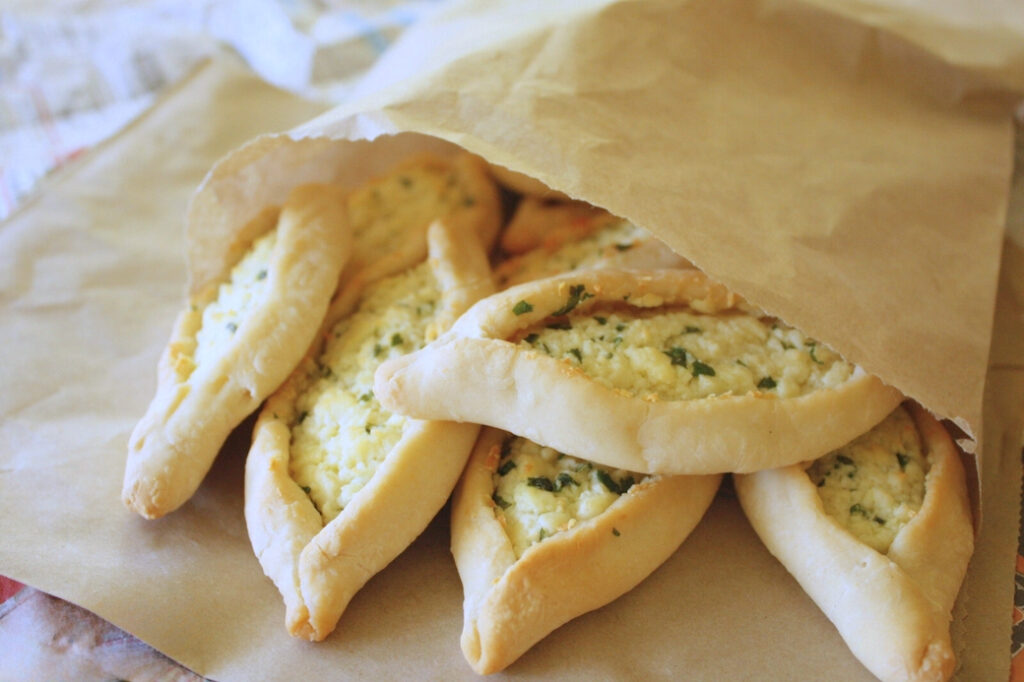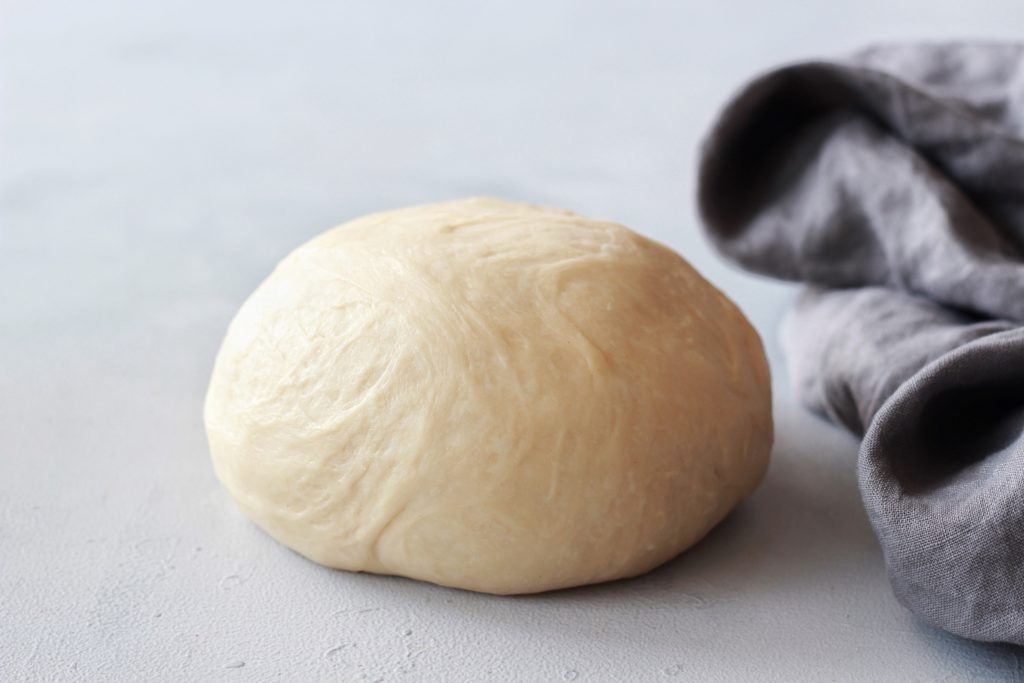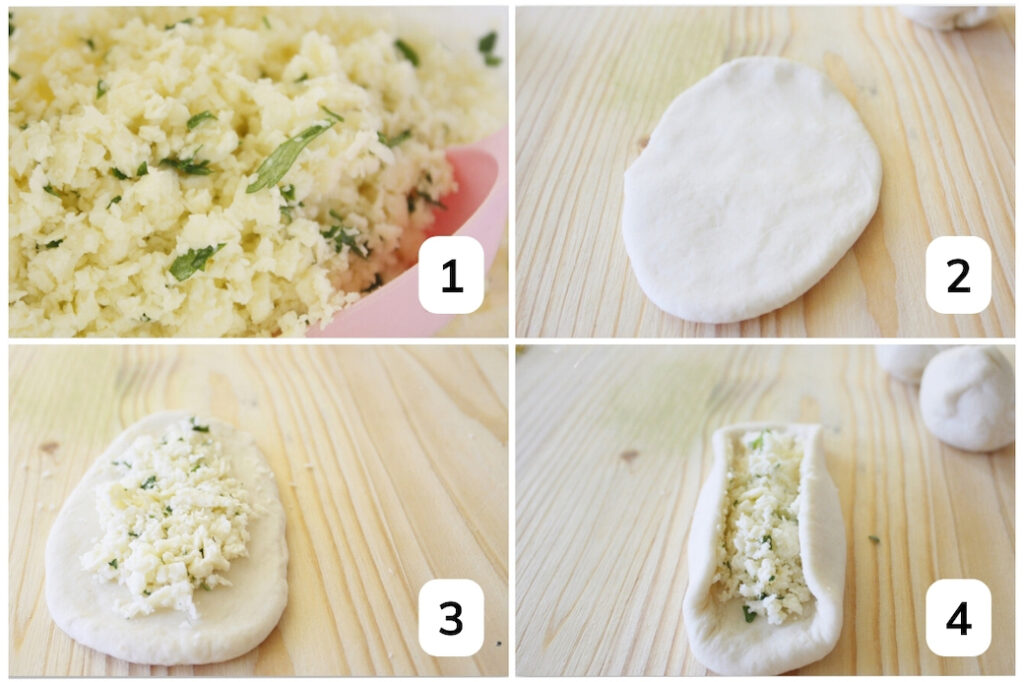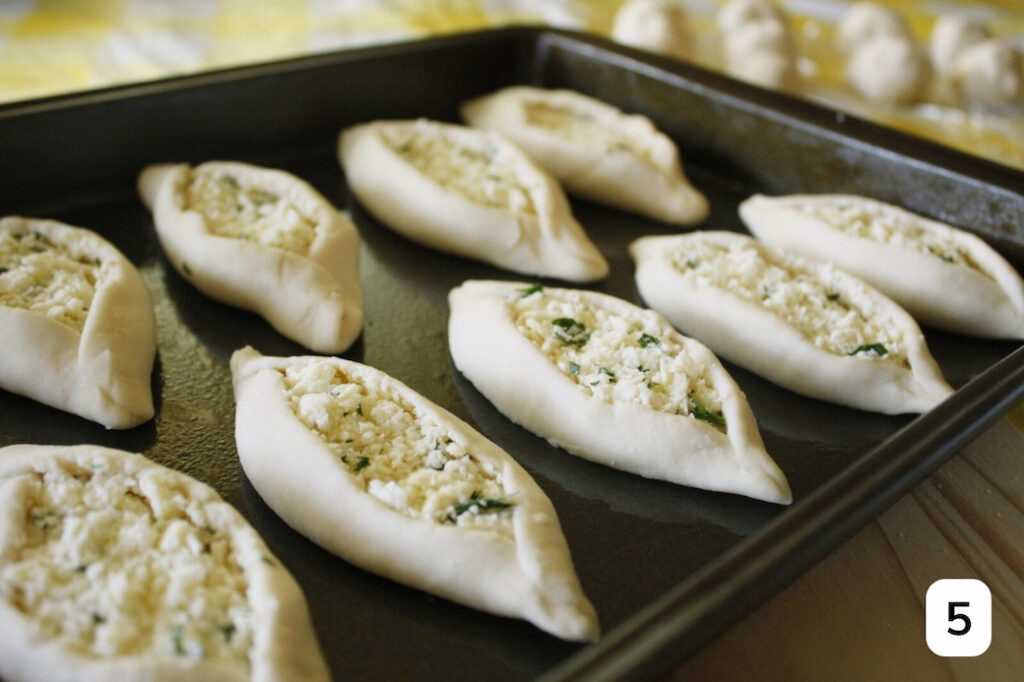This authentic cheese fatayer recipe is made with an incredibly soft homemade dough and the best halloumi cheese filling. Make ahead and freeze or enjoy warm from the oven.

I’m really excited to share with you today’s recipe for fatayer bi jibneh (cheese fatayer). They are the Levant’s version of Turkish Pide – and dare I say, even better. These savoury hand pies are a staple across the Middle East. Cheese fatayer and za’tar fatayer are commonly eaten for breakfast with a hot cup of tea and happen to be my favourite breakfast food in Syria. I’m especially obsessed with cheese fatayer as they bring back so many comforting memories and I’ve since been on a mission to recreate them here in Australia with a simple home oven.
I reckon I’ve done it! These cheese fatayer are the culmination of years of trial and error, finally capturing the authentic look and taste of the ones I’ve enjoyed in Syria. Their traditional shape is the boat (canoe) or eye shape, made with a yeast-risen dough, and filled with an insanely good halloumi filling. Try them for yourself and let me know how you like them! If you’re new to making fatayer, I have a more in-depth post about fatayer, and working with yeast here.
Overview: Cheese Fatayer Ingredients and Method
For the full recipe and a breakdown of the steps, jump to the recipe card below.

To make fatayer, start by sifting the flour, yeast, and sugar in to the bowl of a stand mixer. Mix to combine. Add the salt to the dry ingredients and set aside. Alternatively, sift into a large bowl and knead by hand. Add milk and oil to a heatproof jug and microwave until lukewarm. Combine yoghurt, milk mixture, and dry ingredients and knead with a hook attachment or by hand for 7-10 minutes until a supple dough forms. Cover and set aside to rise for 1-2 hours, or until doubled in size.

In the meantime, grate the halloumi cheese and finely dice the parsley. Combine in a bowl and set aside until you are ready to prepare the fatayer. Line two baking sheets with parchment paper. Divide the dough into 20 equal portions and roll each into an oval. Place a heaped tablespoon of the halloumi filling over the centre of the rolled dough and fold the sides over, pinching the two end to form an eye/canoe shape.

Place fatayer on the a baking sheet and repeat until the dough and mixture is finished. Set aside to proof again. Preheat the oven to 200ºC and reshape fatayer if necessary. Bake for 15-20 minutes or until lightly golden, dough is cooked through, and cheese has melted.
Tips and FAQ for making the best Cheese Fatayer
To make perfect fatayer bi jibneh, you need a combination of a dough that will hold its shape after baking, and good quality cheese. Some questions I often get asked are:
Can I substitute the cheese filling with something else?
If you are not fussed about recreating fatayer authentically, the cheese can be substituted. Use a cheese with a low moisture content to avoid doughiness and uneven baking. Great substitutes include feta cheese, the OG akkawi, cheddar, cotija, paneer, bocconcini or mozzarella. Ensure to squeeze out any brine and pat cheese dry before using. If you’re wanting to completely change up the filling, check Feel Good Foodie’s meat fatayer, or for something vege-based try my spinach fatayer recipe.
Can I make the dough ahead of time?
Yes, a prepared dough can be kept overnight in the fridge. Bring to room temperature before using, ensure to deflate the dough once it reaches room temperature.
How do I get that perfect boat shape?
This step is the most crucial yet it’s overlooked in almost all fatayer recipes on the internet! Proof the dough a second time once it’s been shaped and filled. This gives you the opportunity to reshape the fatayer as necessary before baking, including sealing the corners again and pressing down on the cheese filling with the back of a spoon to keep it perfectly shaped.
Can I freeze fatayer once baked?
Yes, fresh is best but fatayer can be frozen. If you are intentionally planning on freezing, reduce baking time by 5-10 minutes until dough is just cooked through but has not coloured. Allow to cool to room temperature then freeze wrapped in ziplock bags for up to 3 months. When reheating, allow fatayer to come to room temperature on a lined baking sheet, then bake until golden brown and heated through.

Cheese Fatayer
Ingredients
Fatayer Dough
- 2 cups plain flour
- 3 tbsp granulated sugar
- 1 tbsp instant yeast
- ½ tsp salt
- 110 grams (6 tablespoons) plain yoghurt, at room temperature
- ⅓ cup dairy milk of choice
- ¼ cup flavourless oil, sunflower or similar
Cheese Fatayer Filling
- 10 sprigs parsley, finely chopped
- 1 ¾ cup haloumi cheese, grated
Instructions
To make the dough and filling
- Sift the flour, instant yeast, sugar and salt into a large bowl. Whisk to combine.
- Mix milk and oil in a measuring jug and heat in the microwave in 20 second intervals until lukewarm, but not hot.
- Make a well in the centre of the dry ingredients, add yoghurt and milk mixture. Combine with your hand until a dough forms. If using a stand mixer with the dough hook attachment, be sure to stop and scrape down the bowl.Cover and let rise in a warm spot for an hour, or until doubled in size (usually no more than 90 minutes should do it).
- Meanwhile, prepare the filling by combing grated halloumi and finely chopped parsley in a mixing bowl. Set aside.
To assemble the fatayer
- Preheat the oven to 180ºC (375ºC) fan forced / 200ºC (400ºF) conventional.
- When dough has doubled in size, divide into 20 equal pieces. Roll each ball of dough into a ¼ inch thick (about ½ centimetre) oval/football shape. Add a heaped teaspoon of the filling into the centre of the oval and fold about centimetre (½ inch) of the long edges of the dough over filling while pinching the top and bottom to create a shape that looks like a boat.
- Transfer to a baking sheet lined with parchment paper. Brush the edges with milk or heavy cream. Repeat with the rest.
Tried it? Let me know if you liked it!
If you tried this recipe and loved it, take a moment to let me know how you liked it with a rating and comment! Feel free to also leave a question there about this recipe and I’ll get right back to it. Happy fatayer making!
Leave a Reply